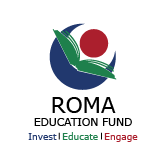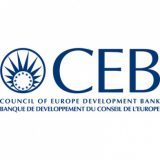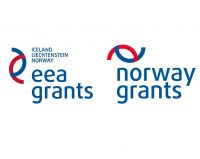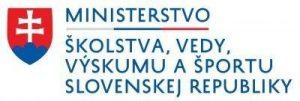Croatia’s education reforms have been a work in progress, or as one article boldly states, “a roller coaster.”
In October 2014, the Croatian government adopted a new, “Strategy for Education, Science and Technology” that aimed to not only modernize the school system but also introduce curricula reform.
The curricula reform became a heavily debated issue and fell in the crossfires of elections, being shelved then reworked and reshelved based on the party in power.
It wasn’t until Science and Education Minister Blaženka Divjak was appointed in 2017 that the curriculum reform began to be seriously further developed. After rounds of consultations and experimentations in schools, the reform was finalized, and the goals and results of its experimentation stages were presented by the Minister at the Education World Forum in January 2020 in London. Education Minister Blaženka Divjak affirmed that the ongoing curricula reform undertaken by her and her team “has been the most comprehensive change in the schooling system so far.”
In addition to replacing the 25-year-old curricula, Croatia made sweeping changes to introduce a Roma course in the curriculum designated for Roma students, developed together with a panel of Roma experts including Roma Education Fund’s staff and network. The new curriculum covers changes for the first to fifth grades in primary school, first year of secondary school, and all four years of vocational school.
According to Croatia’s Constitutional Act on Minorities, minorities have the right to be educated in their native language, however this has not been the case for Croatian Roma. A public call by the Ministry of Science and Education sought to change this in 2015 by announcing the development of a Roma curriculum for the needs-based Model C group. Since there is a shortage of textbooks in Romanes language, and since there is a large majority of Roma who do not speak Romanes, the education authorities thought it best to integrate the new Roma course in the needs-based Model C. Model C allows flexibility of choice for parents and schoolteachers, with parents being able to ask the school to implement the Roma curriculum for their children.
The new Roma curriculum course titled, Language and Culture of the Roma National Minority was developed with a seven-person group appointed by the Ministry of Science and Education including Roma Education Fund’s Country Facilitator for Croatia, Sinisa-Senad Music.
The developed Roma curriculum allows for children to attend extra classes for two to five hours per week, taught in their native tongue (variety of Romani Chhib or Bayash -ili Boyash, Romanian dependent on parent’s influence), with the aim to preserve the language and culture of Roma in Croatia. The language of instruction for all other subjects remain Croatian, but children will also have the opportunity to learn a Romanes language in line with the new curriculum.
The new curriculum course for highlighting Roma inclusion is much overdue, as a recently published analytical report conducted jointly with the Council of Europe, Roma Education Fund, and the Georg Eckert Institute for Textbook Research, on the representation of Roma in curricula and textbooks, found that out of the 54 mainstream Croatian history, geography and civics textbooks examined, there were 46 mentions of Roma in 19 textbooks. Out of the 46 mentions, only 2 mentions presented a theme related to Roma culture and 6 mentions were related to a theme of Roma positions in contemporary society. The rest focused on the historical context such as the Second World War and the demographic composition of the country.
The new course looks to mitigate the under-representation of Roma in contemporary society by stating its “purpose is to develop communication, intercultural and civic competences that will help students of the Roma minority become aware of their identity in a multicultural environment through learning their mother tongue and history and nurturing culture as a dynamic concept.” The Roma curriculum course, according to its proposal, is based on the principals of flexibility, interculturalism, and a student-centred approach that aims “to build a school culture that respects diversity“ and “bring[s] about a positive change in the school environment in which members of the Roma national minority are at risk of exclusion.”
The main components of the course, according to the Curriculum Proposal Roma Language And Culture – Model C will equip students with the following:
- Master basic linguistic activities of listening, speaking, reading and writing in Romanes (Romani Chhib or Bayash -ili Boyash, Romanian) to communicate, express and convey thoughts in different communication situations and for different purposes
- Develop and nurture linguistic-cultural identity, intercultural competences and a sense of belonging and respect for one’s linguistic identity, culture and tradition, while respecting other communities and their values
- Contribute to building aesthetic values and become acquainted with the contribution of the Roma national minority and Roma in the world and in the cultural and artistic fields
- Develop the capacity for critical thinking, problem solving, decision-making and awareness of personal identities, and participate responsibly in community situations based on shared values of protecting human rights and promoting social justice
- Foster understanding of important events, individuals and phenomena from the history of the Roma, respecting the chronological framework and understanding the cause and effect processes that have influenced the present situation of the Roma
The complete reformed curriculum is obligatory for primary and secondary education and will be implemented starting the 2020/2021 academic year. The curriculum on the subject of Language and Culture of the Roma National Minority Model C is open to all students who are interested in learning more about Roma culture and identity.
While the Roma Language and Culture curriculum proposal for Model C is a step in the right direction, many challenges remain for its implementation.
To begin with, Croatia does not have a good track record of “nurturing culture” for Roma minorities. In May 2019, Croatia’s children’s ombudswoman stated that Roma children’s rights are continually violated in the education system, this past November, 12 Roma children were expelled from their kindergarten due to late payment fees. The Science and Education Ministry is responsible for paying the kindergarten fees, yet the school authorities held the parents responsible for the Ministry’s late payments. The case is even worsened with the fact that Roma children are highly underrepresented in preschool programs. According to the European Commission Education Monitor (2016), the participation rate in early childhood education of Roma in Croatia is 32% while compared to 72% for the general population. Residential segregation as basis of problematic travel possibilities to school facilities, budget cuts on travel subsidies for pupils and linguistic barriers are listed as contributing obstacles. According to the Second European Union Minorities and Discrimination Survey (2014), Roma early school leaving is 68% in Croatia compared to 3% for the general population.
The new Roma curriculum according to the proposal totes a flexible model, citing several times the need to adapt to individual student needs’ and the responsibility teachers have “in designing teaching content that will reflect the linguistic, historical and cultural characteristics of the communities.” Teachers are also given the onus to independently select or create the learning material needed. However, the curriculum proposal falls short in addressing the reality of bias among teachers and educational administration, and the need to train (some) teachers in how to adequately create spaces of interculturalism, as one of the pillars defined the in curriculum. The Roma curriculum proposal mentions the need to employ teachers who belong to the same group of Roma as the children who are attending the class, but this remains problematic due to the low enrollment of Roma in pedagogy studies in Croatia.
The Language and Culture of the Roma National Minority curriculum puts value on innovative and interactive learning, incorporating cultural artifacts and digital media. Students, and children in particular, are encouraged to contribute their knowledge from home and from their communities. Parents are highlighted in the importance of active participation in the interactive learning component. It should be noted that in order for this to take place, an established level of trust is required from both school personnel and the Roma communities.
While many challenges remain, it is certain that the new curriculum, if implemented as proposed, is a strong step in addressing the need to cultivate the language and rights of minorities in Croatia.
Access to quality and inclusive education cultivates an inclusive society that respects the diversity of the nation and brings forth a stronger community. It is time that more nations incorporate a curriculum that bridges the gap in Roma language and cultural knowledge. While Roma Education Fund is continuously engaging with governments to ensure a more fair and accurate treatment of Roma in educational systems, in accordance with international human rights standards, the commitment ultimately lies with the educational authorities and states.
This article was written by REF Communications Officer, Angela Alimi

















